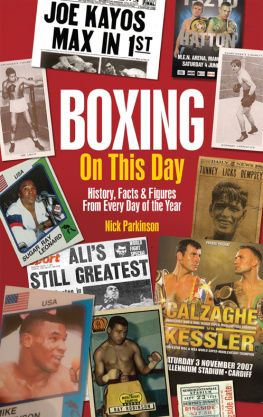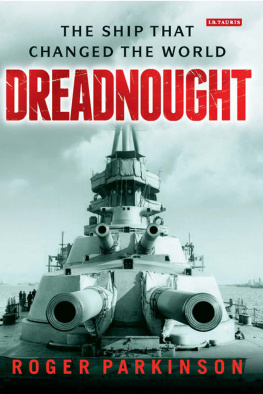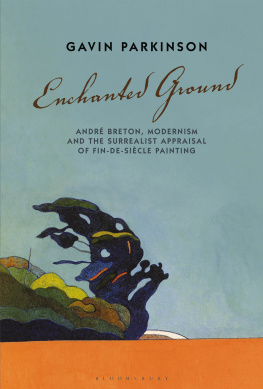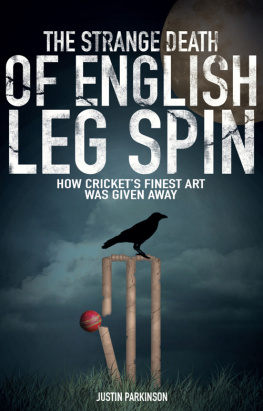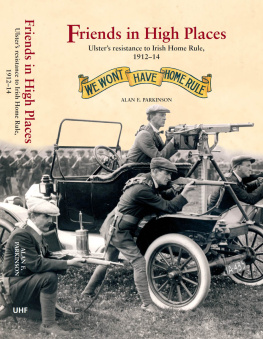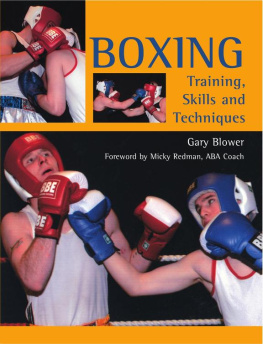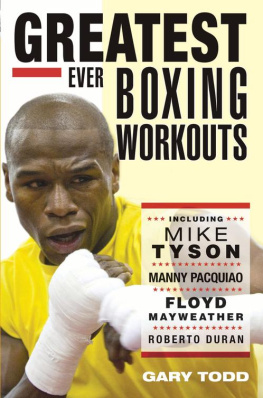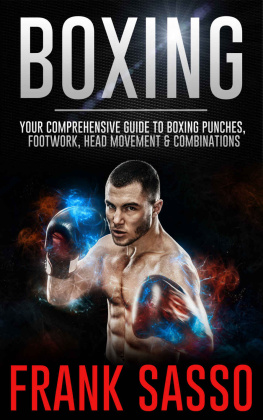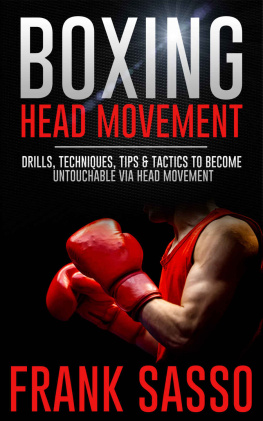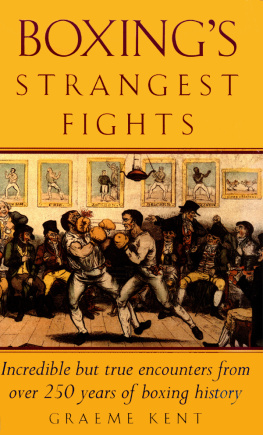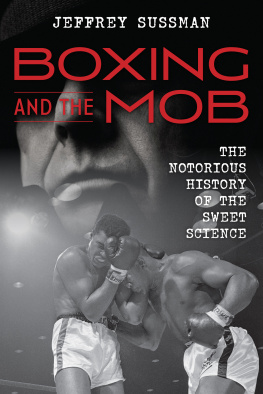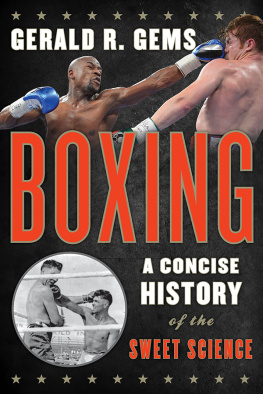First published by Pitch Publishing, 2015
Pitch Publishing
A2 Yeoman Gate
Yeoman Way
Durrington
BN 13 3QZ
www.pitchpublishing.co.uk
Nick Parkinson, 2015
All rights reserved under International and Pan-American Copyright Conventions. By payment of the required fees, you have been granted the non-exclusive, non-transferable right to access and read the text of this e-book on-screen. No part of this text may be reproduced, transmitted, downloaded, decompiled, reverse-engineered, or stored in or introduced into any information storage and retrieval system, in any form or by any means, whether electronic or mechanical, now known or here in after invented, without the express written permission of the Publisher.
A CIP catalogue record is available for this book from the British Library
Print ISBN 9781785310522
eBook ISBN: 9781785310898
--
Ebook Conversion by www.eBookPartnership.com
DEDICATION
For Caroline, George, Oliver and Teddy
Contents
ACKNOWLEDGEMENTS
Thanks firstly to Pitch Publishing for giving me the opportunity to write my first book, which I have thoroughly enjoyed working on. Thanks also to my wife Caroline and our three boys George, Oliver and Teddy for putting up with me when I start talking excitedly about boxing. Thanks also to my dad, Alan, for his proof-reading.
For research, Ive used a lot of books, newspaper cuttings and video footage of fights (most of which can now be found online). There are too many names to include here but thanks to all my fellow journalists who have reported on boxing down the years, boxing historians and others involved in the media or boxing industries. Without their reports, statistics and accounts, this project would not have been possible. Thanks, in particular, to those at www.boxrec.com, an excellent source for boxing statistics and information.
Lastly, thanks to the boxers themselves who are featured in these pages.
INTRODUCTION
It is hard to think of a sport where history matters more than in boxing. The fight game is regularly looking back over its shoulder to mark anniversaries of big fights, remember glorious eras and to measure heroes of the fluorescent present against those of the sepia-toned past.
Boxing may have become a marginalised sport in recent years, but its epic encounters are known all over the world. Those that dont know the difference between a left hook and a fishing hook could still name boxings big fights and its brightest stars.
People have forever been saying boxing was better in the past, but the sport is still capable of producing special moments and fighters to rank among the best in history. When Floyd Mayweather Jr and Manny Pacquiao finally met in May 2015, it was the biggest fight since at least the 1980s and the richest ever in pugilistic history. The long-anticipated world welterweight title fight captured a mainstream audience around the world, an occurrence that has been increasingly rare in recent decades.
In the UK, as in most countries, boxing has suffered from a diminished audience as it has been squeezed off regular showings on free-to-air television. Fight fans now have to seek out their sport as if on a treasure hunt, tracking down latest news on websites, social media and watching fights mostly on cable television channels. Although boxing can no longer be found regularly on UK terrestial television, it is still capable of capturing the publics imagination: Carl Frochs world super-middleweight title rematch with George Groves in May 2014 was British boxings biggest fight since the Second World War.
In this book, Ive tried to include a mixture of events from the recent era going back over a hundred years, featuring fights and incidents that were significant or memorable across the world. Apologies if some of your favourites are not included here as there were difficult choices for some days and I wanted to ensure there was some variety. Ive attempted to include a broad spectrum of boxers and nationalities, from the heroic to the villainous and from the amusing to the sad.
I hope this book provides an entertaining journey back through boxing history enabling the reader to reminisce or perhaps learn something new about the sport, which still has plenty of fight left in it.
Nick Parkinson, June 2015
1st JANUARY 1923
Harry Greb was as wild in the ring as he lived out of it and in the year he won the world middleweight title, he met his match for fighting dirty. This was the second of three fights in four months with Bob Roper, who was knocked out of the ring in the fifth round. When Greb leant between the ropes offering a hand to his stricken opponent, Roper could not resist the opportunity to land two punches on his unsuspecting opponent. Roper 20 pounds heavier smacked Greb after the bell in the ninth and tenth rounds during a foul-filled scrap in which even the referee was hit twice before Greb was given the ten-round decision. Prize fighting aint the noblest of arts and I aint its noblest artist, said Greb, AKA The Human Windmill.
2nd JANUARY 1957
Sugar Ray Robinson is widely regarded as the best ever boxer but at 35 he was past his prime when he met Gene Fullmer in a second defence of his world middleweight title at Madison Square Garden. Robinson had speed, silky skills, timing, bravery and power but by now he was slower and the reflexes were waning. He had even retired in 1952, only to make a comeback in 1955 and had soon regained the title. Fullmer, a 25-year-old Mormon from Utah, was fresher and the 15-round points decision was unanimous in his favour after he had floored Robinson in the seventh round. But Robinson was not finished. In a rematch the following May, Robinson won back the title for a fourth time after knocking out Fullmer with a single left hook.
3rd JANUARY 2007
Edwin Valero did not hang about in the ring. The Venezuelan blasted away his first 18 opponents inside the first round before being extended to two and then ten rounds. In the first defence of his WBA world super-featherweight title against Mexican Michael Lozada, he took just 72 seconds to register a 19th first round stoppage win. Valero seemed destined to become one of the biggest stars of his era after this fight but he never fulfilled his full potential as three years later, aged 28, he committed suicide in a police cell after stabbing his wife to death.
4th JANUARY 1940
World welterweight champion Henry Armstrong looked like he might finish Joe Ghnouly early after knocking him down three times in the opening round, but his fellow St Louis boxer got on his bike to avoid further punishment in the next few rounds. Armstrong caught up with Ghnouly early in the fifth round and finished him with three successive left hooks. Astonishingly, Armstrong defended his world title with a ninth round win over Pedro Montanez just 20 days later. Known as Homicide Hank, Armstrong held the featherweight, lightweight and welterweight world titles at the same time briefly in 1938.
5th JANUARY 1971

